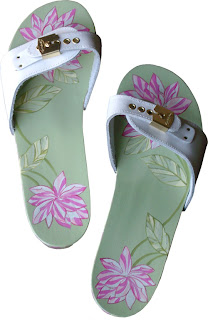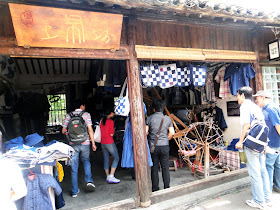1. Make several squares in the pattern you've chosen.
2. Block and measure the squares. Blocking is especially important when assembling a blanket out of squares. It's one of the few times I actually block my work. The time and headache saved in assembly more than makes up for what you spend blocking. I have photos and written instructions on the process I follow here.
3. Decide how you're going to assemble your squares. The assembly method you choose will affect the finished size of your blanket. Whipstitching or single crocheting the blocks together won't afect the size much. But joining with a decorative stitch can affect the outcome. Even just a 1/4" added on a join can add 4 - 5" to the overall size of a king blanket using 4" squares. So if you're choosing something fancy like that you're going to have to piece a few together to figure out what the size is of your blocked, assembled square.
4. Divide the length and width of the blanket you want (I've compiled a list of standard blanket & bedding sizes here) to make by the size of your finished squares (including whatever you added for assembly).
This probably won't be a round number, so you'll have to decide whether you want to round up and make a slightly larger blanket, or round down and make a slightly smaller blanket. (Keep in mind that if you round down you can add a decorative border.) Then multiply the number of squares you need across by the number of squares you need for the length and you'll have the total number of squares you'll need to make.
As a formula it would look like this for a 48" x 60" throw made out of 5" squares:
48"/5"=9.6" so round up to 10.
60/5=12.
10 x 12=120.
So you'd end up making 120 squares and your blanket would be done in rows of 10 squares. And you'd have 12 rows.
Final finished size would be 50" x 50".
My 3 favorite books filled with Granny Square Patterns:
I've spent a lot of time poking around the web looking for free granny square patterns. Keeping track of them is sort of a nightmare. Not only are the patterns written in each persons own "shorthand", but the photos are uneven & it's a hassle to print them out & keep them in any sort of organized fashion that allows me to find what I want when I want it. While browsing in the bookstore I bought just about every book I could find on the subject. Here are my favorites. I highly recommend them to your library!








































